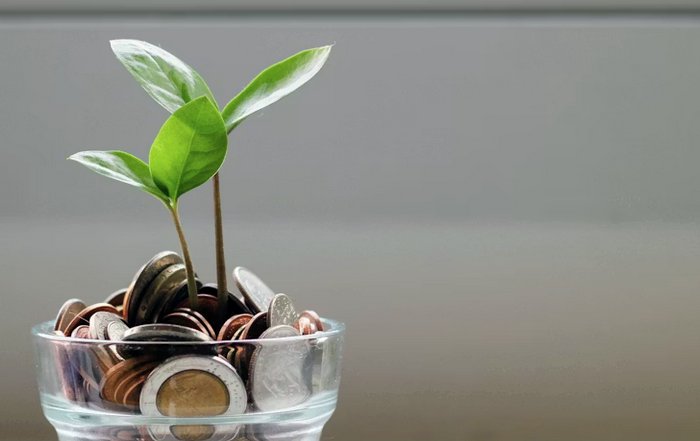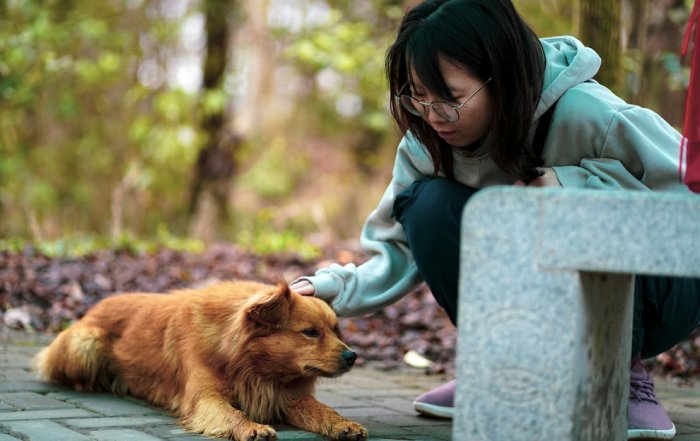How to Practice Mindful Consumption in 2025: A Strategic Guide for Sustainable Living and Business
Mindful Consumption as a Strategic Response to a Changing World
By 2025, the language of sustainability has shifted from aspiration to necessity, and the concept of mindful consumption has moved from the margins of environmental discourse into the center of personal, corporate, and policy decision-making. For readers of eco-natur.com, who track developments in sustainable living, circular economies, and responsible business, mindful consumption is no longer simply about buying less; it is about making deliberate, data-informed, and values-driven choices that align personal lifestyles and corporate strategies with planetary boundaries, social equity, and long-term economic resilience. As climate impacts intensify and resource constraints become more visible in markets from food to energy, the way individuals and organizations consume is rapidly becoming a defining factor of competitiveness, reputation, and long-term viability.
Mindful consumption can be understood as an integrated practice that combines awareness, intention, and accountability across the full lifecycle of products and services, from raw material extraction to end-of-life recovery. It is grounded in the recognition that every purchase, investment, and design decision carries embedded environmental, social, and health consequences, and that these consequences can be measured, managed, and improved. In this context, eco-natur.com positions mindful consumption not as an abstract ethical ideal, but as a practical framework for sustainable living, responsible leadership, and forward-looking economic strategy that applies equally in the United States, United Kingdom, Germany, Canada, Australia, France, Italy, Spain, Netherlands, Switzerland, China, and across Europe, Asia, Africa, South America, and North America.
Understanding Mindful Consumption: From Awareness to Action
Mindful consumption begins with awareness, but it does not end there. It requires a continuous process of questioning need, evaluating impact, and aligning choices with long-term values rather than short-term impulses. At the individual level, this means pausing before a purchase to ask whether the product is truly necessary, whether it is durable and repairable, and whether it has been produced under fair and environmentally responsible conditions. At the organizational level, it means embedding sustainability criteria into procurement, product design, marketing, and risk management, and recognizing that unchecked consumption can undermine brand trust and regulatory compliance in increasingly stringent markets.
Global institutions such as the United Nations Environment Programme highlight how consumption patterns in wealthier regions disproportionately drive resource use and emissions; readers can explore broader context through resources on sustainable consumption and production. For eco-natur.com's audience, this macro perspective reinforces a key insight: mindful consumption is not only a personal wellness or ethical choice, it is also a structural lever for transforming supply chains, stimulating innovation in cleaner technologies, and accelerating the transition to a low-carbon, circular economy. The concept is closely tied to the principles discussed on eco-natur.com's pages on sustainability and sustainable living, where consumption is framed as a dynamic relationship between people, ecosystems, and markets rather than a one-way extraction of value.
The Psychology of Consumption and the Business Case for Mindfulness
Mindful consumption demands a clear understanding of why people and organizations consume the way they do. Behavioral science research from institutions such as Harvard Business School and London School of Economics shows that social norms, default options, and marketing cues heavily influence purchasing behavior, often more than rational cost-benefit analysis. Many consumers in the United States, Europe, and Asia still equate material acquisition with status, security, or self-expression, while businesses, driven by quarterly metrics, may prioritize volume growth over long-term value creation. Those seeking to practice mindful consumption need to recognize these psychological and systemic pressures in order to consciously counter them.
For a business audience, the case for mindful consumption is increasingly financial and strategic. Reports from organizations like the World Economic Forum demonstrate that resource-efficient, circular business models can reduce costs, mitigate supply chain risks, and open new revenue streams in leasing, repair, and service-based offerings; readers can explore these trends in depth through analyses on circular economy opportunities. In addition, consumer surveys in markets such as the United Kingdom, Germany, Sweden, Norway, and Japan show rising demand for products with credible sustainability credentials, particularly among younger demographics who scrutinize green claims and expect transparency. For companies featured on eco-natur.com's sustainable business and economy pages, integrating mindful consumption principles into core strategy is becoming a differentiator that can strengthen brand equity and investor confidence.
Connecting Mindful Consumption to Sustainable Living
For eco-natur.com's global community, mindful consumption is most visible in everyday practices that collectively shape environmental footprints and social outcomes. Sustainable living is not only about installing solar panels or driving an electric vehicle; it is about systematically questioning patterns of use in housing, mobility, clothing, technology, and leisure, and choosing options that reduce waste, conserve resources, and promote well-being. Detailed guidance on these lifestyle shifts is available on eco-natur.com's lifestyle and zero waste pages, which frame personal choices as part of a broader cultural shift away from disposability.
International research from organizations such as The World Bank underscores that changes in household consumption patterns can significantly reduce emissions and improve public health, particularly in rapidly urbanizing regions of Asia, South America, and Africa. Readers interested in the intersection of lifestyle and development can explore global sustainable development data. By aligning personal habits with mindful consumption principles-buying fewer but higher-quality products, prioritizing repair over replacement, and choosing services over ownership where feasible-individuals in cities from New York to Berlin, Tokyo, Singapore, and São Paulo can reduce their ecological impact while also signaling to markets that demand is shifting towards more responsible offerings.
Plastic-Free and Low-Waste Choices as a Core Practice
One of the most tangible entry points into mindful consumption is the shift away from single-use plastics and unnecessary packaging. The environmental and health impacts of plastic pollution are now well documented by organizations like the Ellen MacArthur Foundation and UNESCO, with microplastics detected in oceans, soils, and even human bloodstreams; those seeking a deeper understanding can learn more about plastic pollution and circular design. For eco-natur.com's readers, this evidence reinforces the importance of integrating plastic-free and low-waste principles into everyday decisions, from grocery shopping to office procurement.
The eco-natur.com page on plastic free provides practical guidance on reducing reliance on single-use items, promoting alternatives such as reusable containers, natural fiber textiles, and refill systems, while the recycling section explains how to handle unavoidable materials responsibly. In regions such as Europe, Canada, Australia, and New Zealand, regulatory frameworks are increasingly restricting single-use plastics, creating both compliance imperatives and market opportunities. Companies that proactively redesign packaging, invest in reusable systems, or adopt bulk and refill models can not only demonstrate leadership but also reduce long-term costs associated with waste management and regulatory risk.
Recycling, Circularity, and Designing Out Waste
Mindful consumption extends beyond refusing and reducing; it also involves understanding how products can be recovered, repurposed, or recycled at the end of their useful life. Recycling alone cannot solve the resource crisis, but as part of a broader circular strategy it plays a critical role in conserving materials, reducing emissions, and lowering dependence on virgin extraction. The eco-natur.com recycling and design pages emphasize that truly mindful consumption requires thinking in systems: what happens before a product reaches the shelf, and what happens after it leaves the user's hands.
Organizations such as the European Environment Agency and United States Environmental Protection Agency provide detailed insights into how recycling rates and material recovery systems vary across regions, and how extended producer responsibility schemes are reshaping corporate obligations; readers can explore environmental policy and recycling data to understand these dynamics. For businesses operating in markets such as Germany, Netherlands, Denmark, and South Korea, where recycling infrastructures are advanced and regulations are stringent, designing products for disassembly, material purity, and reuse is rapidly becoming a baseline expectation. For consumers, practicing mindful consumption means preferring products that clearly communicate recyclability, repair options, and take-back programs, and supporting brands that invest in genuine circular solutions rather than superficial recycling claims.
Wildlife, Biodiversity, and the Hidden Impact of Everyday Choices
One of the less visible but most profound dimensions of mindful consumption is its effect on wildlife and biodiversity. The extraction, production, and disposal associated with consumer goods contribute to habitat loss, pollution, and climate change, all of which are major drivers of species decline. Organizations such as WWF and the International Union for Conservation of Nature (IUCN) have documented alarming trends in biodiversity loss, with significant implications for ecosystem services, food systems, and global economic stability; readers can learn more about biodiversity and conservation. For eco-natur.com's audience, the connection between mindful consumption and biodiversity is central to the site's mission, as reflected in its dedicated wildlife and biodiversity resources.
Consumers in the United States, United Kingdom, France, Italy, Spain, Brazil, South Africa, and Malaysia increasingly recognize that choices about timber, paper, textiles, and food directly affect forests, oceans, and grasslands. Opting for certified sustainable wood, avoiding products linked to deforestation, and supporting brands that commit to nature-positive strategies are all expressions of mindful consumption. Businesses that integrate nature-based risk assessments, informed by frameworks such as those promoted by the Taskforce on Nature-related Financial Disclosures (TNFD), are better positioned to manage long-term operational and reputational risks, while also contributing to global biodiversity goals.
Organic Food, Health, and the Ethics of Everyday Eating
Food systems sit at the heart of mindful consumption because they intersect environmental integrity, human health, cultural identity, and economic livelihoods. Industrial agriculture, with its heavy reliance on synthetic fertilizers, pesticides, and monocultures, has contributed to soil degradation, water pollution, and biodiversity loss, while also raising concerns about long-term public health. At the same time, demand for healthier, more transparent food has driven growth in organic and regenerative agriculture. The eco-natur.com organic food and health sections explore how mindful consumption in food can support both personal well-being and ecological resilience.
Institutions such as FAO and World Health Organization provide extensive analysis on how sustainable diets, including higher intake of plant-based foods and reduced food waste, can lower environmental footprints while improving health outcomes; readers can explore sustainable and healthy diet guidance. For consumers across North America, Europe, and Asia, choosing organic and locally sourced foods where possible, supporting community-supported agriculture, and minimizing highly processed, resource-intensive products are practical expressions of mindful consumption. For businesses in food production, retail, and hospitality, shifting procurement towards certified sustainable and organic producers, improving transparency in supply chains, and investing in waste reduction are increasingly seen not just as ethical choices but as strategic imperatives in markets where consumers demand accountability.
Energy, Climate, and the Transition to Renewable Systems
Mindful consumption also encompasses how individuals, communities, and organizations use energy, which remains one of the dominant drivers of global greenhouse gas emissions. The transition from fossil fuels to renewable energy sources such as solar, wind, and hydro is central to meeting the goals of the Paris Agreement, and consumers and businesses are key actors in accelerating this shift. The eco-natur.com renewable energy page outlines options for households and enterprises to reduce their carbon footprints, from installing rooftop solar to choosing green tariffs and investing in energy efficiency.
Global agencies such as the International Energy Agency (IEA) provide detailed projections and policy recommendations for achieving net zero emissions, showing that demand-side measures-improved efficiency, behavioral changes, and smart technologies-can deliver a substantial portion of necessary reductions; those interested can learn more about sustainable energy transitions. For eco-natur.com's audience in countries like Germany, Denmark, Sweden, Norway, Japan, South Korea, and Singapore, where advanced energy markets are evolving rapidly, mindful consumption translates into choices about appliances, mobility, building materials, and digital services that prioritize efficiency, low emissions, and long-term resilience. For businesses, integrating energy management into strategic planning, setting science-based targets, and engaging employees and customers in conservation efforts are now hallmarks of credible climate leadership.
Mindful Consumption in Sustainable Business and the Global Economy
From a business and economic perspective, mindful consumption is reshaping markets and creating new competitive landscapes. As stakeholders increasingly scrutinize environmental, social, and governance (ESG) performance, companies that continue to depend on volume-driven, resource-intensive consumption patterns face mounting risks, from supply chain disruptions to regulatory sanctions and brand erosion. The eco-natur.com pages on sustainable business and economy emphasize that integrating mindful consumption principles into core business models is no longer optional for organizations that wish to remain credible and resilient in 2025 and beyond.
Institutions such as OECD and International Monetary Fund (IMF) have begun to integrate sustainability and resource efficiency into their economic analyses, recognizing that long-term prosperity depends on decoupling growth from environmental degradation; readers can explore sustainable economic policies. For companies operating in regions from United States and Canada to China, India, Thailand, and Brazil, this means rethinking product portfolios, investing in eco-design and circular systems, and engaging with stakeholders to co-create solutions that reduce overall consumption while maintaining or even enhancing value. For investors, mindful consumption becomes a lens through which to evaluate the resilience of business models, the credibility of transition plans, and the potential for innovation in sectors ranging from fashion and electronics to mobility and real estate.
Building a Culture of Mindful Consumption Across Regions
Practicing mindful consumption at scale requires more than isolated individual actions or corporate initiatives; it requires a cultural shift that spans households, schools, workplaces, and policy frameworks across diverse regions. In Europe, ambitious regulatory packages such as the European Green Deal are setting new standards for sustainable products, circularity, and consumer rights, while in Asia and Africa, rapidly growing middle classes are negotiating the balance between rising material aspirations and environmental constraints. For eco-natur.com's global readership, this diversity of contexts underscores the need for adaptable, culturally sensitive approaches that respect local realities while aligning with universal sustainability principles.
Educational institutions, civil society organizations, and media platforms play a critical role in normalizing mindful consumption and making sustainable choices aspirational rather than restrictive. Organizations such as UNESCO and UNDP support education for sustainable development and community-based initiatives that demonstrate how responsible consumption can improve quality of life; readers can learn more about education for sustainable development. For eco-natur.com, which serves an international audience from United States and United Kingdom to South Africa, New Zealand, and Malaysia, showcasing real-world examples, practical guidance, and region-specific insights helps bridge the gap between global frameworks and local action, and reinforces the message that mindful consumption is both achievable and advantageous.
Integrating Mindful Consumption into Daily Life and Long-Term Strategy
Ultimately, mindful consumption is both a daily practice and a long-term strategy. For individuals, it means consistently aligning purchases, diets, travel, and digital habits with values of care, responsibility, and sufficiency, drawing on resources from eco-natur.com such as sustainable living, plastic free, recycling, and organic food. For businesses, it requires embedding sustainability into governance, innovation pipelines, and customer engagement, moving beyond marketing claims to measurable outcomes and transparent reporting that can withstand scrutiny from regulators, investors, and informed consumers.
Global organizations such as the Intergovernmental Panel on Climate Change (IPCC) and UN Global Compact continue to stress that time is limited to realign economies with planetary boundaries, but they also highlight the transformative potential of coordinated action and conscious choices; those seeking a deeper scientific foundation can explore climate and sustainability assessments. By 2025, the evidence is clear: mindful consumption is not a niche lifestyle trend, but a critical component of resilient societies and competitive economies. For eco-natur.com and its audience across Global, Europe, Asia, Africa, South America, and North America, the path forward lies in combining informed individual decisions, ambitious corporate leadership, and supportive policy frameworks to create a world where consumption serves human and planetary well-being rather than undermining it.








